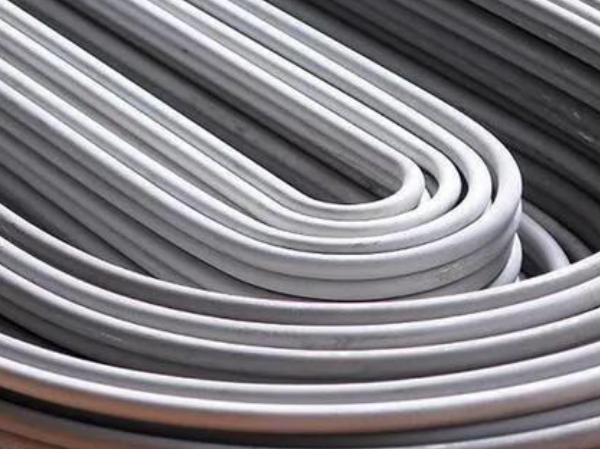When designing pressure pipelines, after the pipe diameter is calculated and determined, the material of the pipe must be selected. The use of commonly used pipe materials for pressure pipelines is determined based on the operating conditions (such as pressure, temperature) of the transported medium and its medium characteristics under these conditions.
Improper selection of materials can cause waste or create hidden dangers of accidents. If pipes of ordinary materials can be used, choosing pipes of more expensive materials will increase unnecessary infrastructure investment. The use of carbon steel in situations where acid-resistant stainless steel should be available will directly affect the normal operation of the pressure pipeline and even cause trouble. Therefore, when selecting pipe materials, designers are required to first understand the type, specifications, performance, and scope of use of the pipe. It is best to investigate the application of the pipe in other similar pressure pipelines, and then determine the material of the pipe according to the following principles.

(1) Preferred pipe materials
When selecting pipe materials, metal materials are generally considered first. When metal materials are not suitable, non-metallic materials are then considered. For metal materials, steel pipes are preferred, and non-ferrous metal materials are considered later. Among steel pipes, carbon steel is first considered, and stainless steel is used when it is not suitable. When considering carbon steel materials, consider
welded steel pipes first, and then choose
seamless pipes when not applicable.
(2) Influence of medium pressure
The higher the pressure of the conveyed medium, the thicker the wall thickness of the pipe, and generally the higher the requirements for pipe materials.
When the medium pressure is above 1.6MPa, seamless steel pipes or non-ferrous metal pipes can be used. When the pressure is very high, such as in the production of synthetic ammonia, urea and methanol, the medium pressure of some pipes is as high as 32MPa. High-pressure seamless steel pipes made of 20# or 15CrMo are generally used. Pipes on vacuum equipment and oxygen pipes when the pressure is greater than 10MPa generally use copper tubes and brass tubes.
When the medium pressure is below 1.6MPa, welded steel pipes, cast iron pipes or non-metallic pipes can be considered. However, the pressure that cast iron pipes bear from the medium shall not exceed 1.0MPa. The medium pressure that non-metallic pipes can withstand is related to the type of non-metallic material. For example, for rigid polyvinyl chloride pipes, the operating pressure is less than or equal to 1.6MPa; for reinforced polypropylene pipes, the operating pressure is less than or equal to 1.0MPa; for ABS pipes, the operating pressure Less than or equal to 0.6MPa.
For water pipes, when the water pressure is below 1.0MPa, welded steel pipes made of Q235A are usually used; when the water pressure is greater than 2.5MPa, 20# seamless steel pipes are generally used.
(3) Influence of medium temperature
Pipes of different materials are suitable for different temperature ranges. For hydrogen with a pressure of 1.0MPa, when the temperature of the hydrogen is less than 350°C, 20# seamless steel pipes are generally used. When the temperature of the hydrogen is in the range of 351~400°C, 15CrMo or 12CrMo seamless steel pipes are generally used.
(4) Influence of chemical properties of medium
To transport different media, different pipe materials are used. Some media are neutral, and generally do not have high material requirements, so ordinary carbon steel pipes can be used; some media are acidic or alkaline, so acid- or alkali-resistant pipes must be selected. Strong acids and strong bases and weak acids and weak bases have different requirements for the use of pipes. The same acid or alkali has different material requirements for pipes with different concentrations. For transporting water and steam, carbon steel pipes are sufficient. For example, in a urea plant, stainless steel pipes are generally used to transport carbon dioxide, because carbon dioxide forms carbonic acid when it meets water, and carbonic acid has a corrosive effect on ordinary steel pipes. For example, carbon steel pipes can be used for fuming sulfuric acid, but carbon steel pipes cannot be used for dilute sulfuric acid, because dilute sulfuric acid and carbon steel can react chemically and corrode carbon steel, so duralumin pipes can be used.
(5) Influence of the function of the tube itself
In addition to the function of transporting media, some pipes also have the function of absorbing shock, coefficient of thermal expansion and contraction, and the function of being able to move frequently under working conditions, such as civil liquefied petroleum gas, oxygen, and acetylene gas when filling bottles. For parts of the pipe, high-pressure steel wire braided hoses are often used instead of hard steel pipes that are inconvenient to move.
(6) Effect of pressure drop
After the material of the pipe is initially selected, the pressure drop of the pipe must be calculated to determine the inner diameter of the pipe. Through the calculation of pressure drop, see whether the selected materials meet the requirements. Especially when initially selecting plastic pipes, more attention should be paid to the review of pressure drop.
The calculation of pressure pipelines in engineering design generally requires material balance, energy balance and equipment calculation based on the production scale to initially determine the material flow rate. Refer to relevant information, assume a material flow rate, calculate the inner diameter of the pipe, check the manual or standards, and select a standard pipe. Usually the inner diameter of the standard pipe should be equal to or slightly larger than the calculated inner diameter of the pipe. Then calculate the pressure drop in the pipe.


